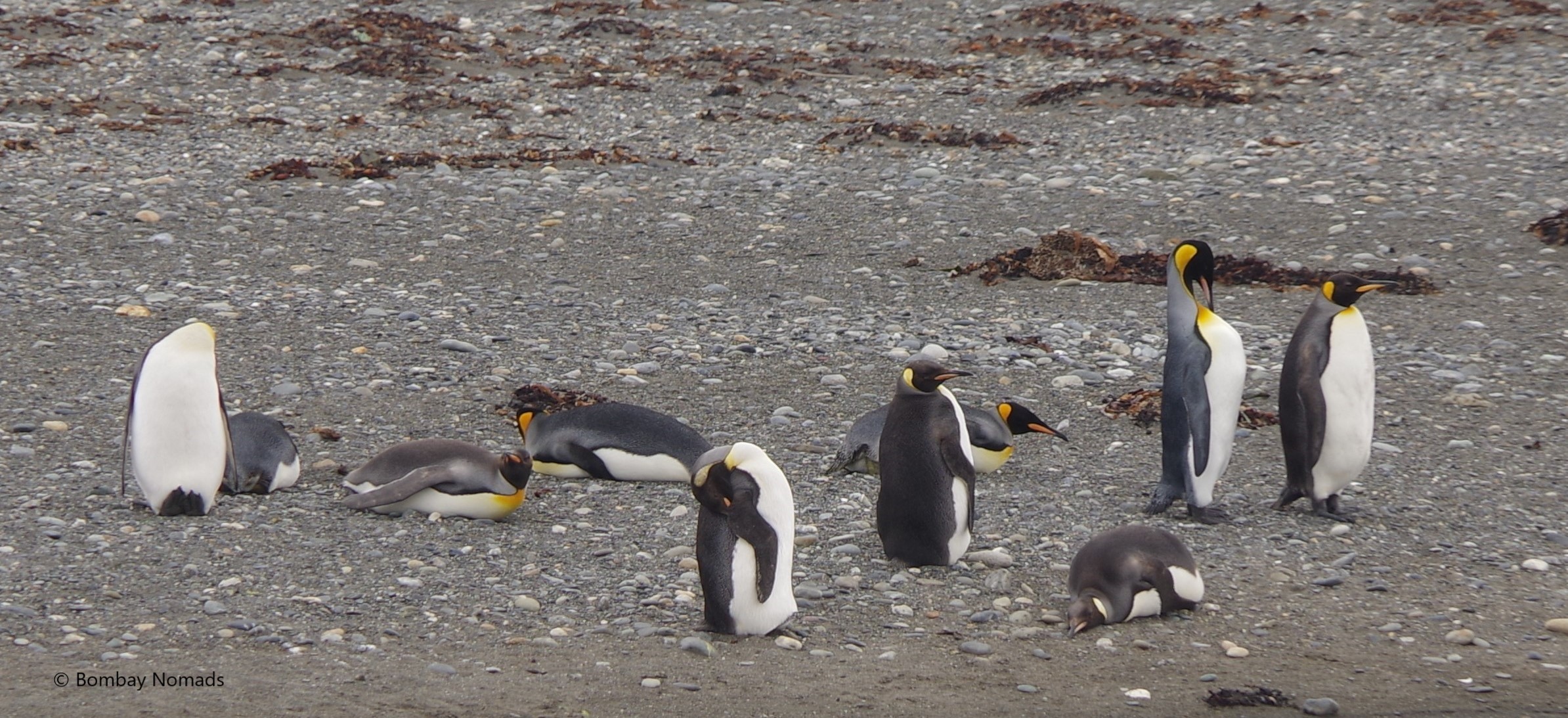Punta Arenas is the southernmost “major city” of Chile, situated on the Magellan Strait, at 53° South latitude. Magellan Strait is a narow sea passage at the tip of the South American continent – between mainland South America and the island of Tierra del Fuego, and is named after the famous circumnavigator Ferdinand Magellan. Like Ushuaia, Punta Arenas was a major refuelling stop during the crossing from Atlantic to the Pacific Ocean, till the construction of the Panama Canal.
Now it is a city of around 125,000 inhabitants, visited by lots of cruise ships and vessels for Antarctica. We spent 6 days in Punta Arenas, including New Year’s Day, for some much-needed R&R.
Journey from Ushuaia to Punta Arenas
Ushuaia is 630 km from Punta Arenas by road. There are no direct flights between the two southern cities, so road was the only option. We used Bus Sur, which is a renowned bus operator in Patagonia. The bus ride is usually 10 hours long, which includes crossing into Chile at the San Sebastien border crossing, and also a ferry ride across the Magellan strait. There is no option of an overnight sleeper, because the borderpost is open in daylight hours only. The bus, was very comfortable and newish. It was fully air conditioned, had generous legroom, the seats inclined about 120°, and it even had an extendable footrest which supported our calves too. We departed on time at 08:15, and on the smooth Argentine highways, we slept through the first few hours and awoke only at the Argentine border post at around 11:00.
The Argentine and Chilean border posts are not next to each other – they are actually 25km apart. Bus passengers have to get down, queue up at the counters to get processed, and then get back on to the bus and drive to the Chilean post, where their bags are scanned and their visas stamped. There is no visible boundary wall/fence between the two nations and not a whole lot of security.
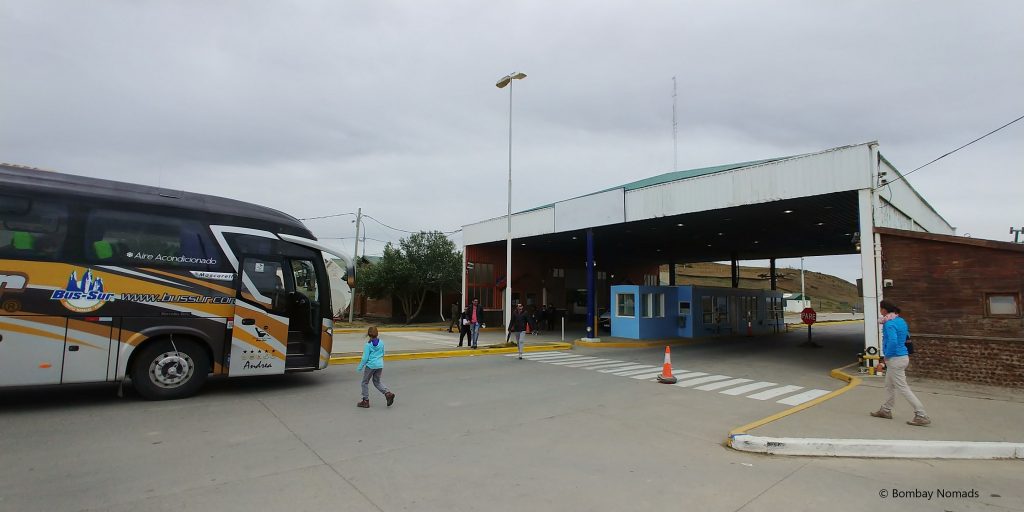
We had a bit of misfortune at the Argentine border post, because one of the bus passengers, was missing the entry stamp on their passport. It turns out, it was missed when they entered the country at Buenos Aires airport. It took two hours for the border police to consult with their superiors in Buenos Aires, before they allowed them to go ahead. The rest for the bus was done in 10 minutes, so it was a long wait in the middle of nowhere, and we did not even know why we were waiting (the bus driver could not leave the passengers there, so the whole bus waited).
A small refreshment shop had ham-n-cheese sandwiches and coffee, which became our saviour. We were only carrying some biscuits otherwise – and we did not see any provision for lunch anywhere. At the Chilean border, they scanned all our bags, and were very interested in any prohibited food items – fruits/vegetables, dairy products etc. – rather than security. By the time everyone was done with Chilean formalities, it was 15:00.
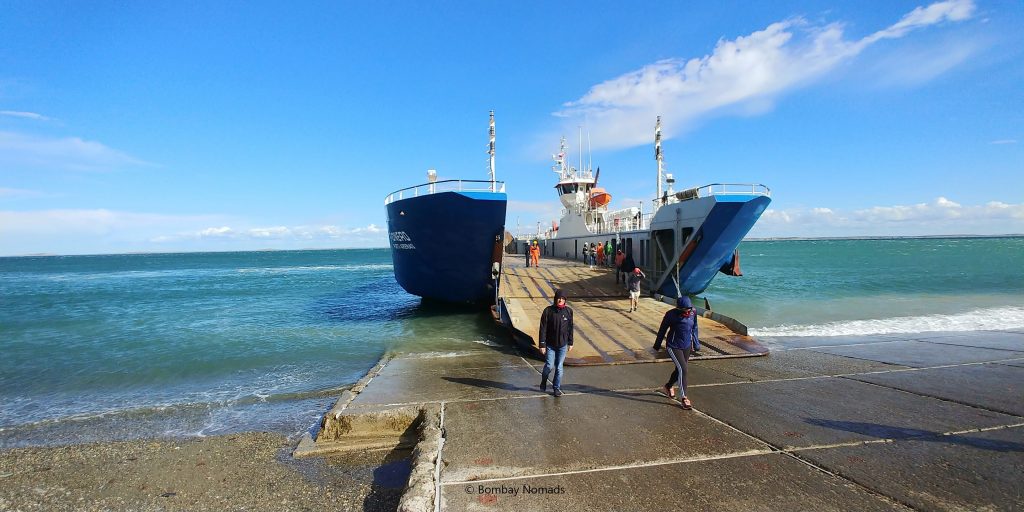
Crossing the Magellan Straits was a smooth, if cold affair. There are two car ferries that operate in tandem, so the frequency of the ferries is every 45 minutes. We were lucky to roll into the dock just as the incoming ferry was coming in, so thankfully we did not have to wait much. The ferry was small-to-medium sized, accommodating 4 long trucks and our bus, apart from a couple of dozen cars. We got off the bus and climbed up to the narrow corridor above the deck – there was no shelter for passengers. The wind was quite strong, blowing our caps off our heads, not to mention chilly. Mercifully, the ride was just 20 min and soon we were on the mainland. We resumed our bus journey at 18:00 and rolled into the Bus Sur terminal* in Punta Arenas at 20:00
* Punta Arenas doesn’t have a common bus terminus – each bus company runs their own terminal.
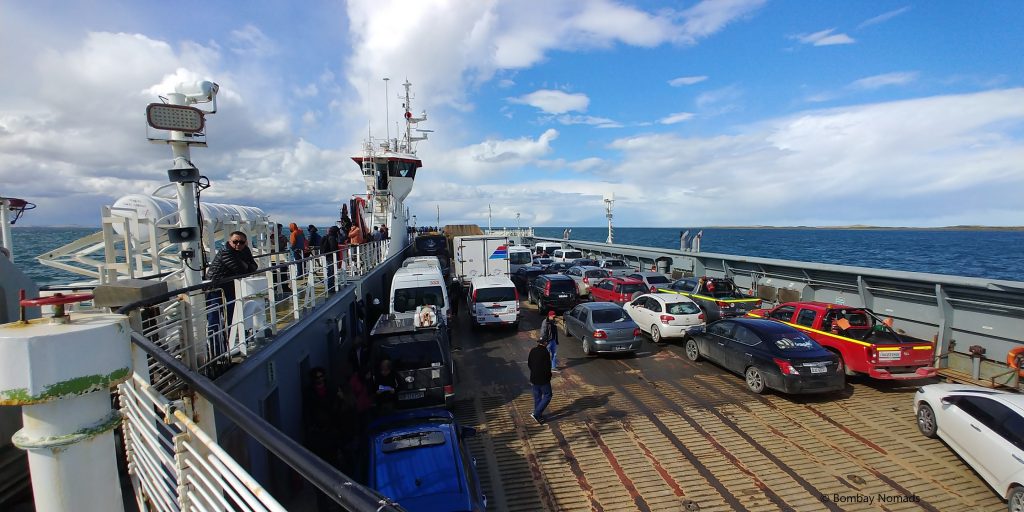
Something became very apparent to us as soon as we reached Punta Arenas – and would probably be visible to most travellers coming into Chile from Argentina – that development and prosperity of Chile is much better, compared to its neighbour
- the streets and pavements were better maintained and cleaner
- the car models belonged to this decade and were not all dented
- credit card acceptability was almost universal (some places even accepted American Express!)
- the selection in super markets was better
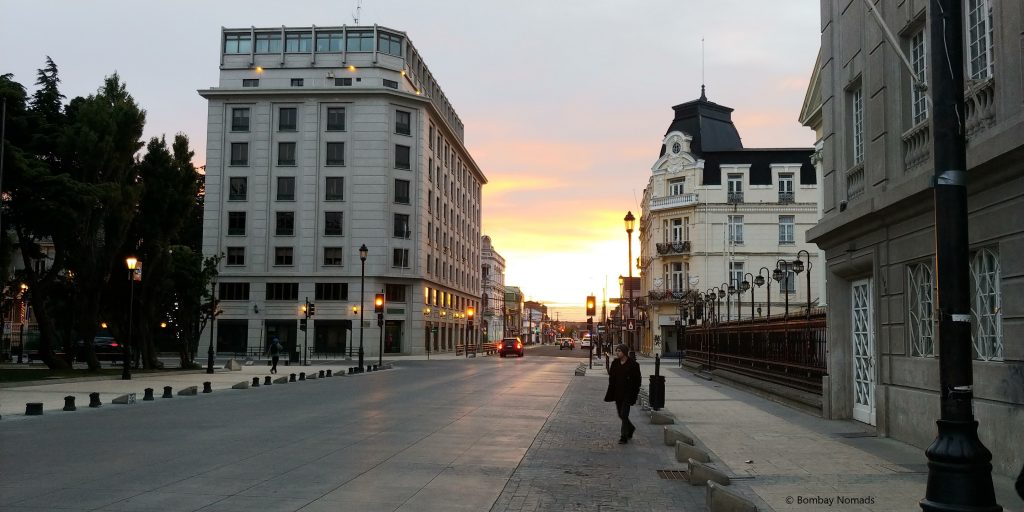
While we had kept couple of days free for things like laundry and haircuts etc, high on our wish list in Punta Arenas were penguins. Monumento Natural Los Pingüinos, near Punta Arenas, is one of the largest nesting sites in the world for Magellanic penguins, where tourists can walk among penguins. And on the island of Tierra del Fuego (Chilean part) is the less well-known Parque Pingüino Rey, home to a small nesting population of majestic King penguins, who are rarely seen outside their Antarctic islands’ habitat. Finding seats on both excursions was a bit difficult because of the holiday season, but we had flexibility of 6 days, and we managed to get them.
Isla Magdalena
Isla Magdalena is a short half day trip from Punta Arenas via boat. It is a common excursion from Punta Arenas and we chose the tour operated by Fiordos del Sur (https://www.fiordosdelsur.com/en/). We paid USD 115 per person for the tour (inclusive of 5,000 peso entry fee), which was probably peak prices. Online prices ranged from USD 95-160. We would recommend the Fiordos del Sur guys because even in peak tourist season, they held our tickets on just a verbal conversation over the phone, without any payment.
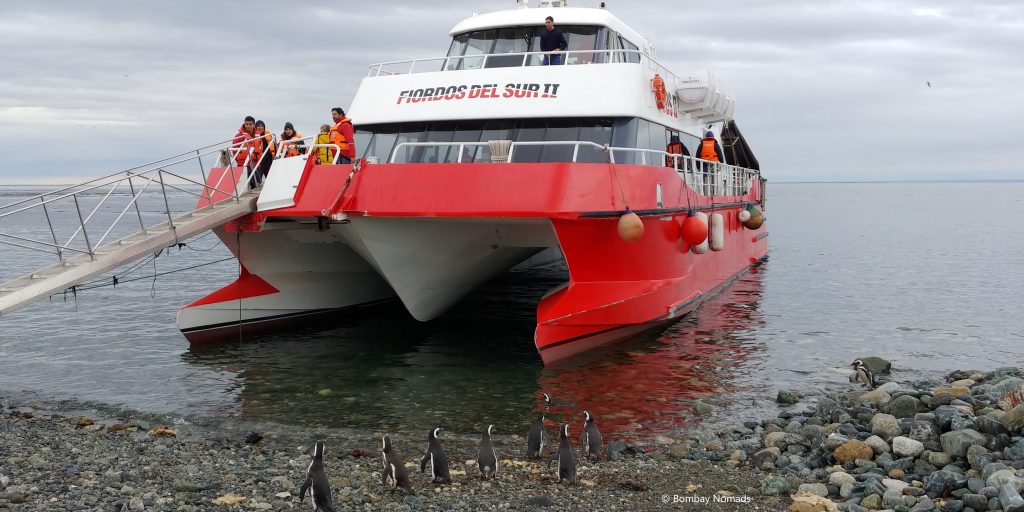
The tour departs from the main port of the town. We reached the docks 45 minutes before departure, to collect our tickets. Our boat was a bright red catamaran with 2 decks, and seating arranged in long rows. After boarding, everyone huddled inside as it was a windy day and it made things uncomfortably cold outside. The crew gave us a safety demonstration and life jackets were mandatory for anyone wanting to go out on the deck. A few enthusiasts braved the cold winds for photographs in life jackets, but we were happy inside, with cups of hot chocolate in our hands.
Isla Magdalena is 1.5 hours away from Punta Arenas and we had one hour to spend on the island itself. Isla Magdanlena and neighbouring Isla Marta constitute Monumento Natural Los Pingüinos (The Penguins Natural Monument). Both islands are treeless and are covered in low grass, where penguins burrow under the ground and lay their eggs
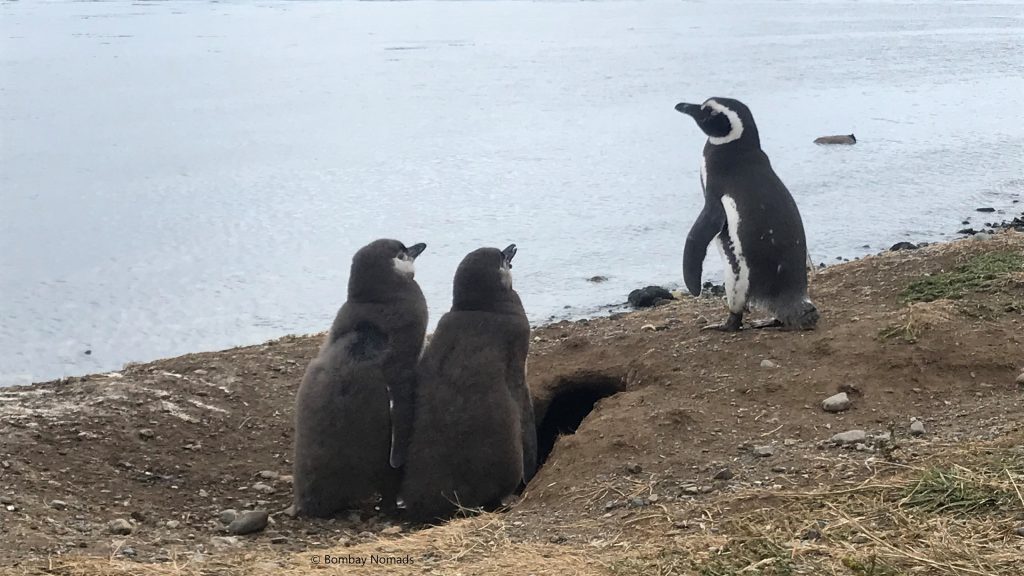
We knew Isla Magdalena has 120,000+ penguins and seeing penguins there is almost a certainty. But we were not prepared for the sheer number of penguins that we saw and how close we could go to the penguins. The island has a temporary dock and a hut for CONAF personnel, but is otherwise uninhabited. We docked near the CONAF hut and barely had we walked 50m when we saw our first trio of penguins – waddling towards the water, seemingly unconcerned with humans.
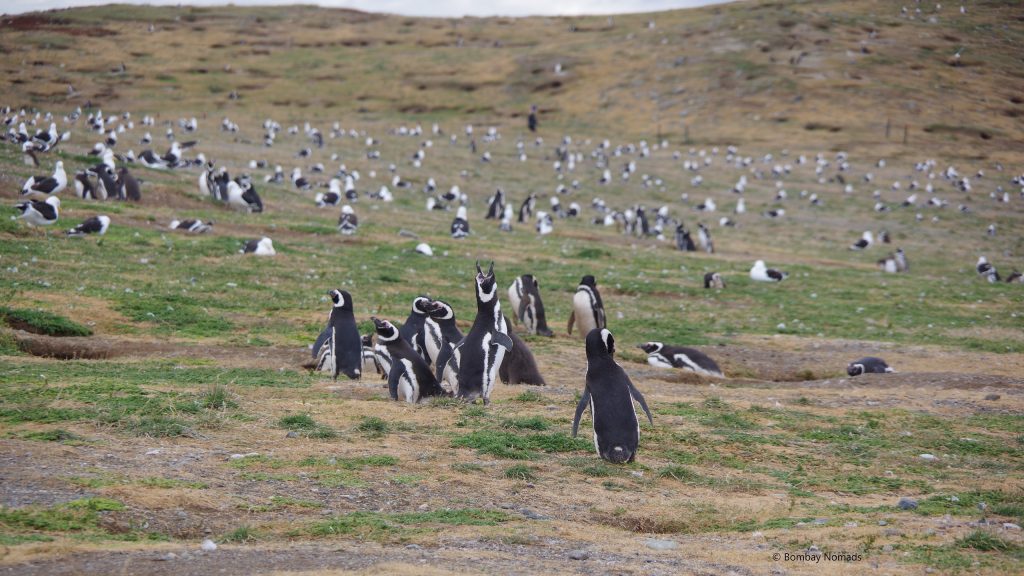
The tourists are restricted to a small walking circuit, 850m long, which explores maybe a fourth of the island. On both sides of the path were thousands of penguins! Doing all sorts of things – sleeping, burrowing, walking, falling, fighting, feeding the young & squawking! The Magallenic penguins are among the smaller species of penguins with heights of 1.0-1.5ft. We’ve all seen penguins on National Geographic/Discovery, but they are just so much cuter in real life!! Especially when they’re walking behind each other or they bump into each other. The babies with their fuzzy feathers and round faces were of course, the cutest*. We couldn’t help but keep grinning and even clap our hands in delight several times. We went around the walking track on the island, taking our own sweet time with many many photos and videos.
(* ok maybe pandas are cuter, but you get the idea)
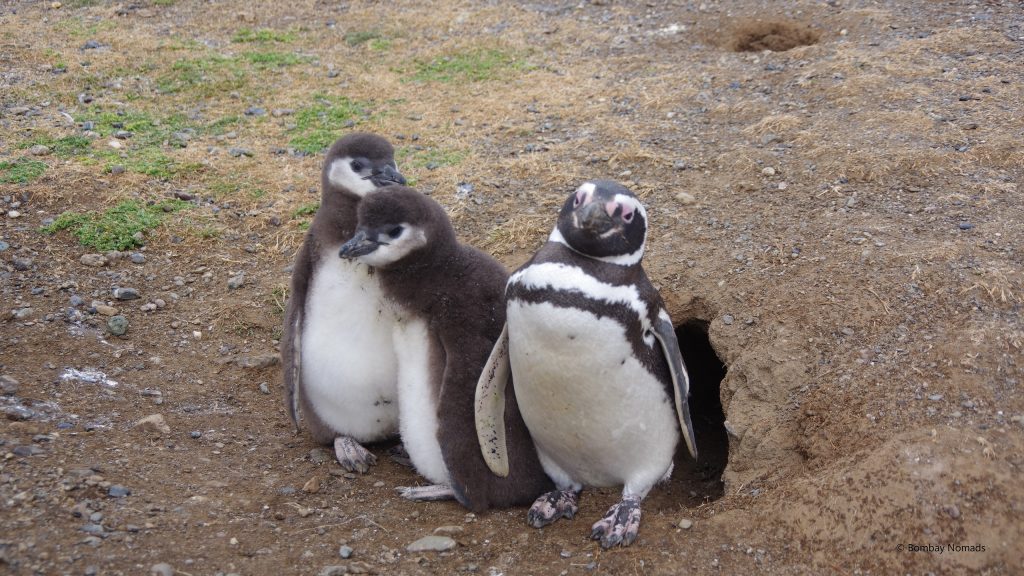
We could have spent few hours just watching penguins going about their day and photographing them. Unlike their cute appearance, penguin call is rather harsh sounding – almost like a donkey braying. With tens of thousands of birds, there is continuous cacophony on the island. Some have created their burrows as far as half a kilometre from the sea, and these tiny birds go waddling to the sea everyday, to catch fish for their children. Penguins frequently kept crossing the walking track and some even stood in the middle giving all us shutter-happy tourists his/her side profiles.
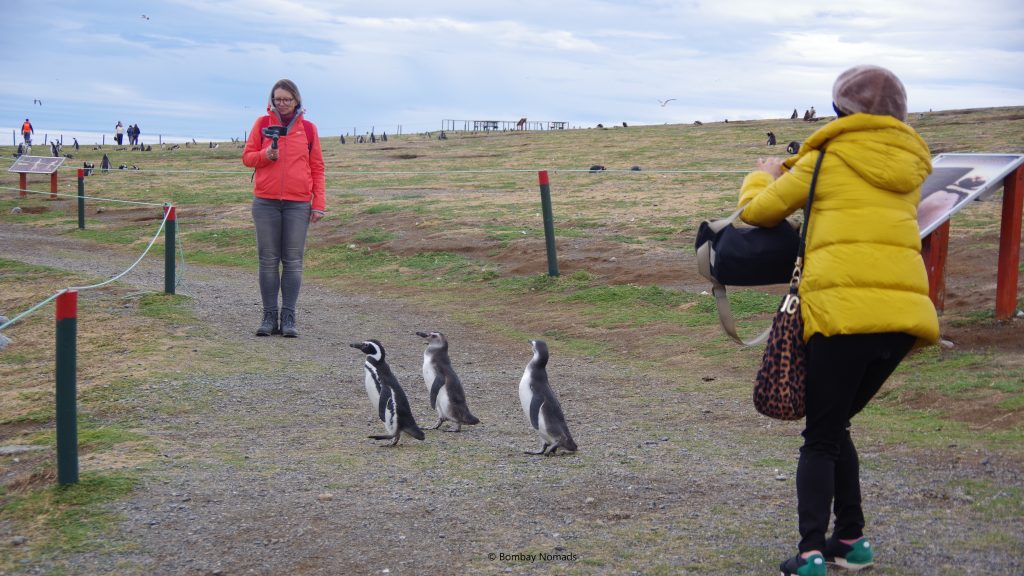
As wildlife expeditions go, Isla Magdalena, with its tens of thousands of baby penguins (in summer season), is a spectacular experience. The good part about this experience is that the penguins have the right of way and the humans are restricted to a specific walking path bordered by ropes. However, we are conflicted whenever we go to see animals in the wild. Aren’t we are still encroaching into their natural habitat, disturbing their daily routines and leaving our footprints all over their existence (sometimes literally)? But neither can we ignore our desire to see these majestic creatures in their natural habitat, while we still can. Sometimes there is no easy answer!
Parque Pingüino Rey
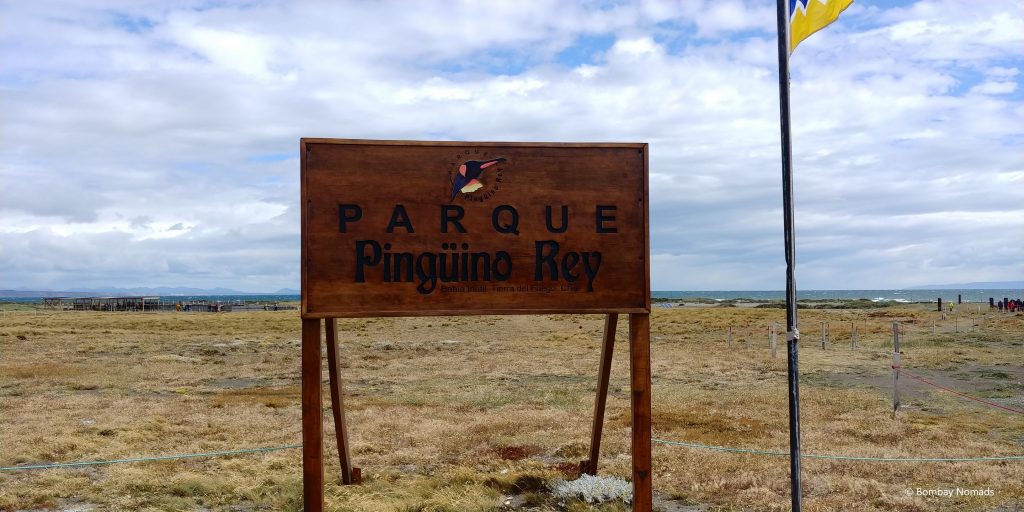
King penguins are larger cousins of the Magellanic penguins, standing about 2-3 ft tall. The King Penguins are beautiful birds with orange beaks and orange-yellow patches around their head and neck, and have a regal demeanour. Tours to Parque Pingüino Rey take a full day and are not as common as Isla Magdalena. We were struggling to make bookings for the tour online and luckily, while walking around the city, we noticed a sign at an agency and signed up on the spot. The tour cost us 110 USD per head.
The excursion is a long one, starting at 7:30am, involves a 2-hour ferry ride on Magellan strait and a 3 hour drive to get to the park with the penguins. The return route is different and consists of a 3 hour drive and a 20 min ferry ride (same one as the Ushuaia-Punta Arenas route). The operator used a SAC Motors (Chinese) minibus – copy of the Mercedes Sprinter (in India we call it the Tempo Traveller) – for the trip it had very cramped seating. Because we do not remember the name of our tour operator, we cant tell you which operator to avoid.
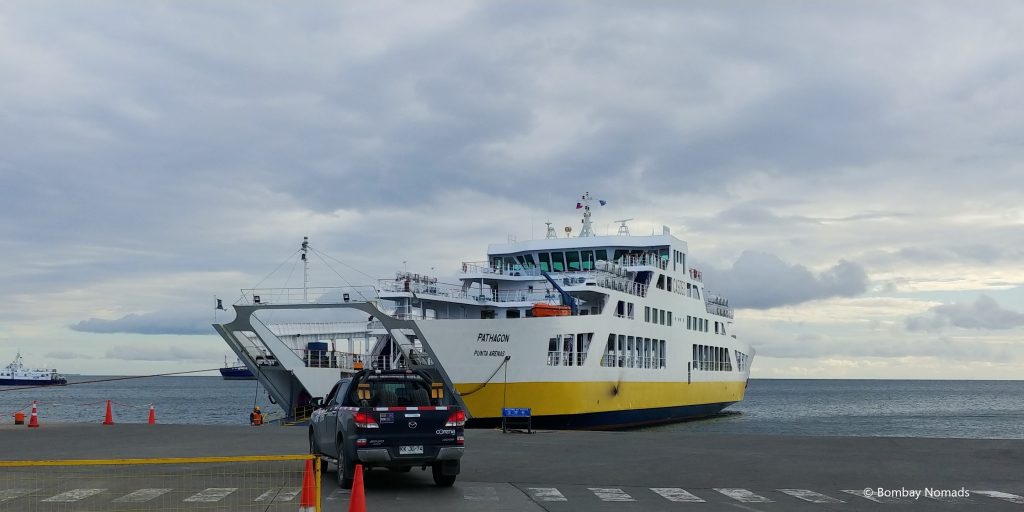
Our tour had some 20 people, from all over the world – Americans, Germans, Chinese, us Indians and some Spanish speakers (not sure of their nationality as we did not go beyond hola and gracias with them). But everyone was on the same page about lack of legroom. Only the seat near the door had decent leg room, and there would be a rush for that seat every time we boarded.
Tip: Please confirm with your operator about the vehicle, before signing up for Parque Pingüino Rey tour, or be prepared for an uncomfortable day.
The tour recommended that we carry a packed lunch for the trip, but the day before the trip was 1st Jan and every shop/bakery was closed. So the tour guide made a lunch stop in the town of Porvenir at a really small café, with limited options. Notable was the complimentary local bread served at the cafe – it was fried instead of baked and seemed like a mix between puris and kulchas back home.
Tip: If you are in Chilean Patagonia, always ask for the king crab (centolla) pie. It is a rustic but fabulous dish.
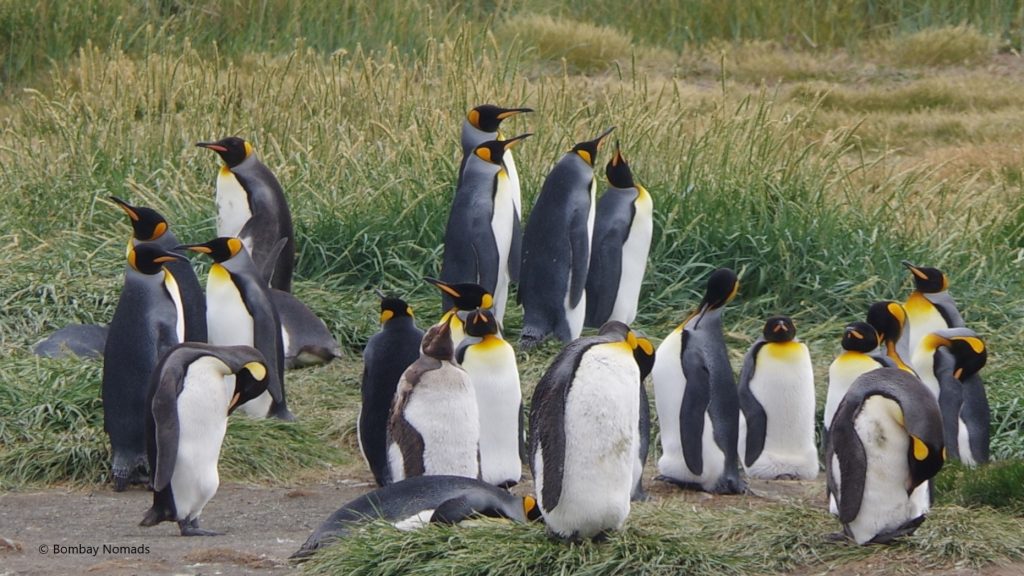
After all the travelling, when we reached the park, we only got about 45 mins with the penguins there. Frankly, the 45 minutes also felt like too much if you did not have a camera (with a zoom lens). There were only 2 groups of penguins in the park, with a total population of about 40-50 birds. The park itself is set near a tidal creek, and is windswept with scattered shrubs and grasses. Unlike Isla Magdalena, we could only view the penguins from a distance of about 100m, that too beyond a wood-n-glass barrier. At that distance, mobile cameras are pointless. Compared to Isla Magdalena and after the long journey, this excursion was a little underwhelming.
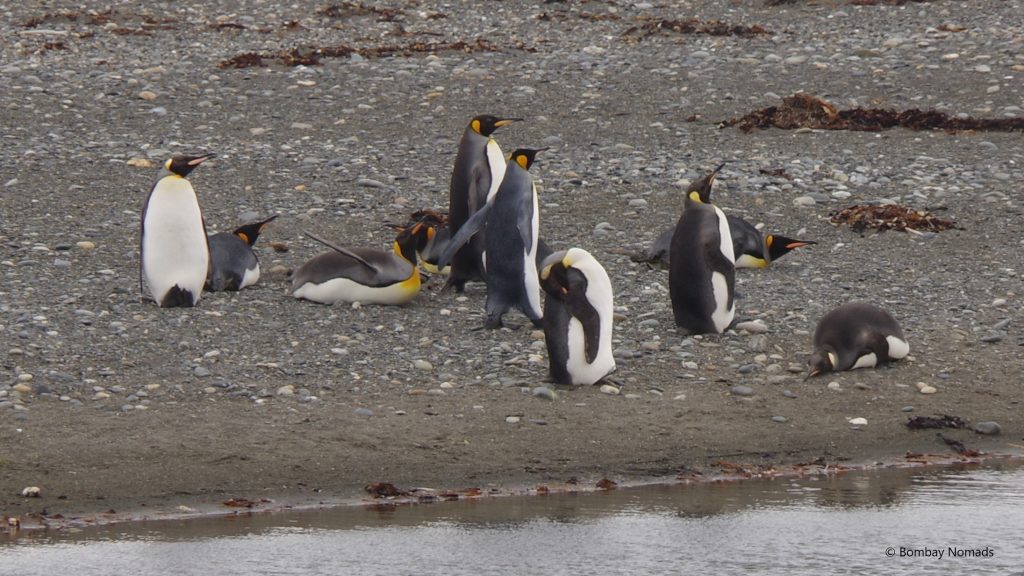
On our way back, we stopped at the San Gregorio Estancia (ranch), which is supposedly the oldest in Chilean Patagonia, but is no longer operational. Currently there are a few ramshackle sheds by the road, apart from the main villa which is still inhabited by the descendants of the founder. But the attraction for us were the remains of two ships on the beach opposite the estancia. Only the rusted metal skeletons of the ships remain, and they make for great photo ops in the soft evening light. The older Yankee gentleman on our bus went especially crazy taking photos there, mumbling about ‘how he will be editing these photos all night’. The rest of the journey was unremarkable and we were back in Punta Arenas by 20:00.
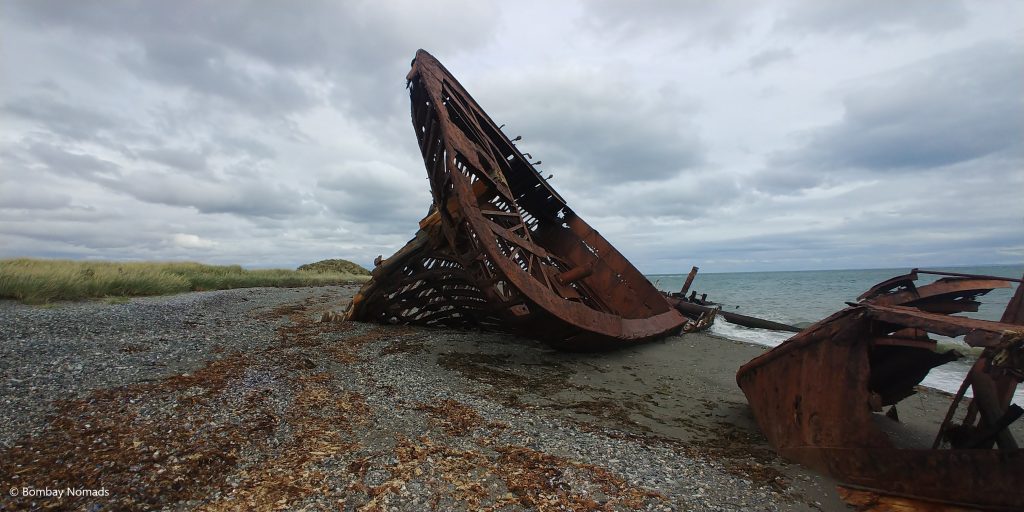
Useful information
- How to reach:
- Punta Arenas has direct flights from Santiago and Puerto Montt. Tickets can be expensive, like everything else in Patagonia
- Punta Arenas can be reached via a 10-hour bus ride from Ushuaia, Argentina
- A slow, but infinitely more picturesque route, is the cruise offered by Australis Cruises ( https://www.australis.com/site/en). The 4 day cruise from Ushuaia includes a visit to Cape Horn, the southernmost tip of South America. The cheapest tickets cost USD 2,000 per person.
- Chile does not charge VAT on hotel stays to foreigners. However, to avail this you need an immigration card/slip that you are supposed to fill up and get stamped from the immigration officials upon entry into Chile. This bit of paper is important with the stamp and is over & above the entry stamp. If you’re entering Chile by land, the immigration officials may forget to give you the slip. This happened to us and even though we had read about it online we forgot to ask for it. However, it can also be easily procured from the nearest police station, which we did.
- Compared to Argentina, there are more food options in Punta Arenas. Sushi is widely available (the cream-cheese-infused American-style sushi though). We found a hole-in-the-wall eatery called Akakiko Sushi, which had the most amazing ramen noodles. The spice broth was exactly what we craved and our palate felt like it was coming alive after a deep slumber. Their sushis were nice too.
- Weirdly, ATMs are not open 24×7 in Punta Arenas. Most ATMs seem to be inside bank branches, pharmacies or supermarkets and are closed at night.
- There is a Hindu temple on the seafront in Punta Arenas, along with statues of Mahatma Gandhi, Mother Teresa and Rabindranath Tagore. However, there is no thriving Indian community – infact it is the handiwork of just one Sindhi family. The Nandwanis came to Punta Arenas in 1905 and settled here, but have remained true to their roots. Now they are a successful business family spread across Chile and Argentina. In fact, we even detected a not-so-slight sense of jealousy from the locals for the amount of money they have. Their story is very nicely highlighted in this article https://scroll.in/article/883496/punta-arenas-did-you-know-of-the-chilean-town-where-a-sindhi-set-up-a-business-outpost
